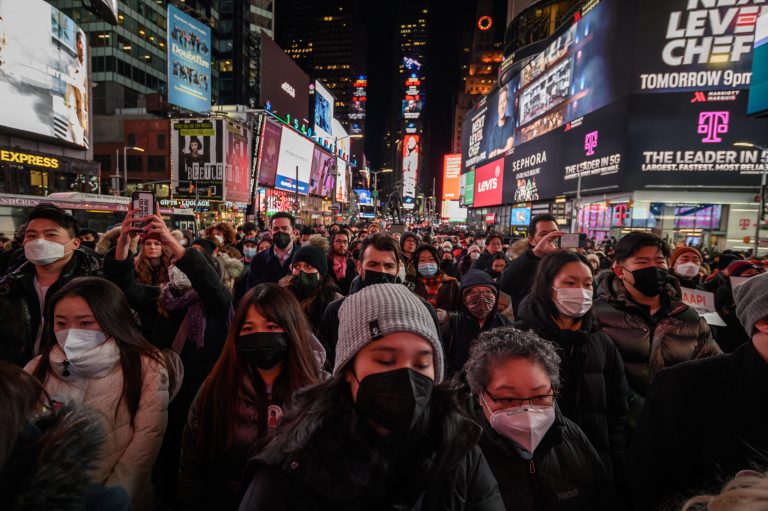On Tuesday, Jan. 18, hundreds of people gathered in Times Square to honour the memory of subway-shove victim Michelle Alyssa Go.
Kim Garnett, a personal friend of Go’s, told the New York Post, “She loved New York. We would talk about it in the pandemic that we would rather be nowhere else,” adding that, “She loved Central Park. She loved living on the Upper West Side.”
Another friend of hers, Rakesh Duggal told The Post, “She loved to travel…We must have done a dozen trips together,” adding, “She was a glass ceiling breaker. No challenge was too big or scary for her. She always wanted to work on the biggest and most challenging things.”
Go, 40, a Vietnamese-American who was working on her MBA at NYU’s prestigious Stem School of Business and who was a senior manager at Deloitte was pushed into an oncoming train by a deranged homeless man on Saturday, Jan. 15 while waiting for a southbound R train around 9:40 in the morning in New York City. Go was pronounced dead at the scene.
“This incident was unprovoked, and the victim does not appear to have had any interaction with the subject,” NYPD police Commissioner Keechant Sewell said following the tragedy.
Success
You are now signed up for our newsletter
Success
Check your email to complete sign up
Witnesses told police that 61-year-old Simon Martial, who shoved Go, was observed fleeing the scene but later turned himself in to transit police.
Martial, is being held at the Bellevue Hospital in Manhattan where he awaits arraignment on murder charges.
The man has served two stints in state prison on robbery and attempted-robbery convictions and has been diagnosed with schizophrenia. The man’s sister told The Post that her brother has been in and out of mental hospitals for more than 20 years.
Following the incident it emerged that Go was an active advocate for the homeless and spent time over the past decade volunteering to help the less fortunate.
No easy solution
The incident has prompted the Metropolitan Transportation Authority (MTA) to explore the possibility of installing platform barriers; however the potential solution would not be easily implemented in the New York subway system.
Acting MTA Chair Janno Lieber told reporters on Tuesday, “Platform doors are an idea that works in many places, but there are special complexities in New York,” adding, “That said, we’re always looking for ways that we can make the system safer.”
Lieber said the age of the system is a reason why barriers may not be a viable solution adding that station ventilation and maintaining platform accessibility were primary concerns.
Operational concerns including “train door misalignment” and “column placement” were also cited.
The solution would also come with a hefty price tag. “MTA leaders have previously knocked platform screen doors as a prohibitively expensive and complicated ‘multi-billion dollar solution,’” The Post reported.
The MTA recently formed a “track trespass” working group tasked with exploring the barriers feasibility, among other initiatives, in response to an increase in subway track intrusions with experts saying that the investment is worth it.
Eric Goldwyn, a NYU transit researcher, speaking to the proposed barriers told The Post, “I’m sure it is feasible. They are already retrofitting stations. If you throw platform doors in, does that cost much more?”
Currently, barriers are only installed on the JFK Airport AirTrain. Goldwyn noted that numerous other international cities have succeeded in retrofitting ageing systems with platform screens including Paris, Hong Kong and Sofia, Bulgaria.
Installing barriers in the New York subway system has been considered on several occasions over the years.
On Monday, Former MTA President Andy Byford said in an email to The Post that in the past signal modernization, implemented to speed up service, was prioritised over barriers.
“The cost to retrofit platforms in NYC (and in London) would be very high. The platforms were in most cases, not designed to carry the weight of the doors, even half height versions. Add into the mix the fact that a fair number of NYC platforms are curved and you have even more of a challenge — you’d be looking at a lot of platform rebuilds,” Byford wrote.
















